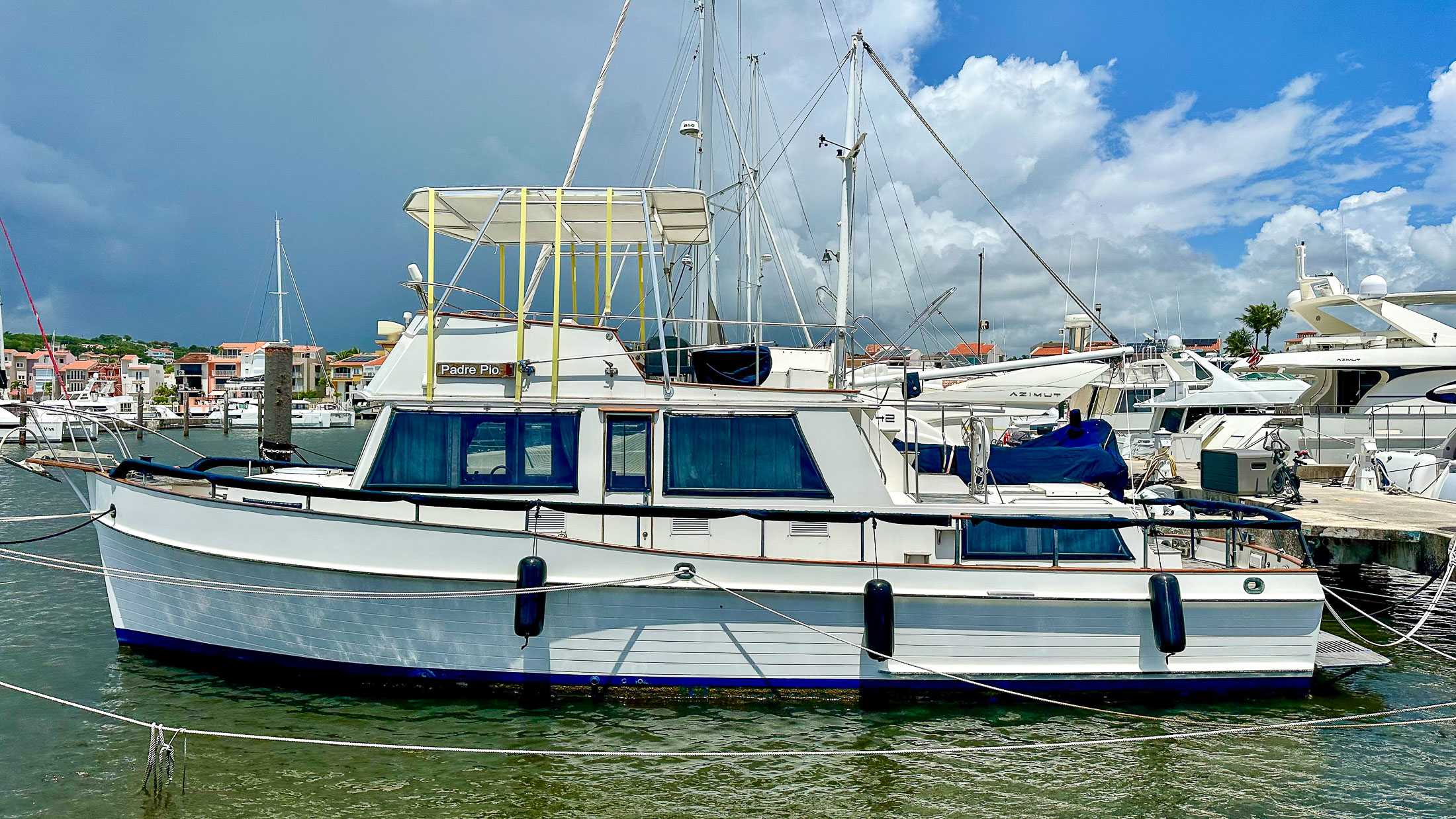I stumbled across this boat on YachtWorld earlier this year while we were still in Poland. Funny enough, I first heard about it years ago on a blog I follow. It’s a 1986 Grand Banks 42' Classic, once owned by a family I’d been following online since around 2006. They bought it back in 2017, when their kids were about the same age as ours are now, and after five years they sold it in 2022 to chase bigger dreams—a catamaran and a plan to sail around the world as their kids headed into their teen years. That boat ended up in Puerto Rico, and it’s been there ever since.
When I saw it listed for sale, the temptation was real. The idea of trying out the boat life in the Caribbean was hard to ignore. After all, we only get one shot at this life, and the kids are at an age where we could actually make it work. Sure, we don’t know much about ocean cruising boats or the lifestyle that comes with them, but we were willing to at least think about it. Every so often I’d peek back at the YachtWorld listing, half expecting it to disappear, but it never did.
By the time we got back to the States in late May, the boat was still available. It had originally been listed for $175,000, then dropped to $145,000, where it stayed. I even reached out to the previous owner I’d been following for years, and he couldn’t have been more helpful—lots of advice, patient answers to my newbie questions. Feeling encouraged, I threw out an offer in early August: $125,000. To my surprise, they accepted. At first, they wanted no survey, but eventually agreed—though they made it clear they wouldn’t pay for anything the survey uncovered.
The boat’s been sitting at the Yacht Club Marina in Palmas Del Mar, on Puerto Rico’s southeast coast, since 2022. I called the marina, got the name of a local surveyor, and even lined up a haul-out quote. The survey was going to be $1,050, plus about $650 for the haul. I had both scheduled and was just about to wire the 10% deposit when Sylwia started getting cold feet. Thankfully, we hadn’t sent any money yet or booked my flight.
After another week of back-and-forth, we decided it was worth at least having me fly out and take a look in person before committing to the survey and everything else. So I booked the flight… and crossed my fingers.
You can check out the full "Three Days in Puerto Rico" post.
On the first night, I booked a condo within walking distance of the marina so I’d be close for the broker meeting the next morning. After staying up late the night before working on the website, I wasn’t exactly eager to get out of bed. My watch said 7:30, so I rolled over for “just a few more minutes.” When I checked again at 8:30, I realized my watch was still on Central Time, not Eastern—Puerto Rico is an hour ahead. That left me only 30 minutes to pack, check out, and make it to my 10 a.m. meeting with Carlos at the marina.
I threw things together quickly and called Carlos to say I’d be a little late. He was already at the marina but offered to swing by and pick me up, which saved me the sweaty walk in the morning heat. When we finally pulled up to the dock, I got my first real look at the Grand Banks in person. That was the moment it hit me: this could actually be our floating home in the Caribbean.
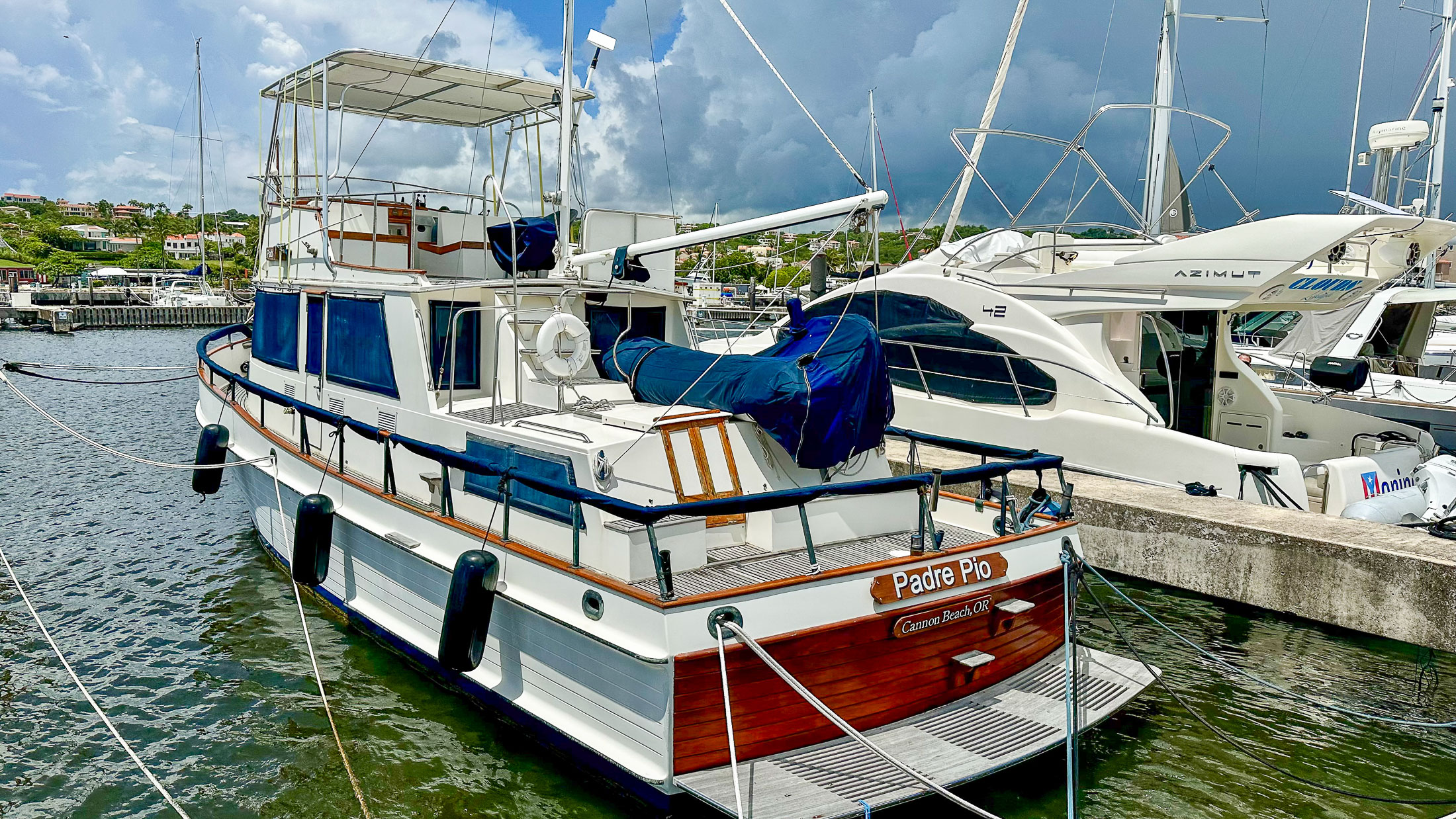
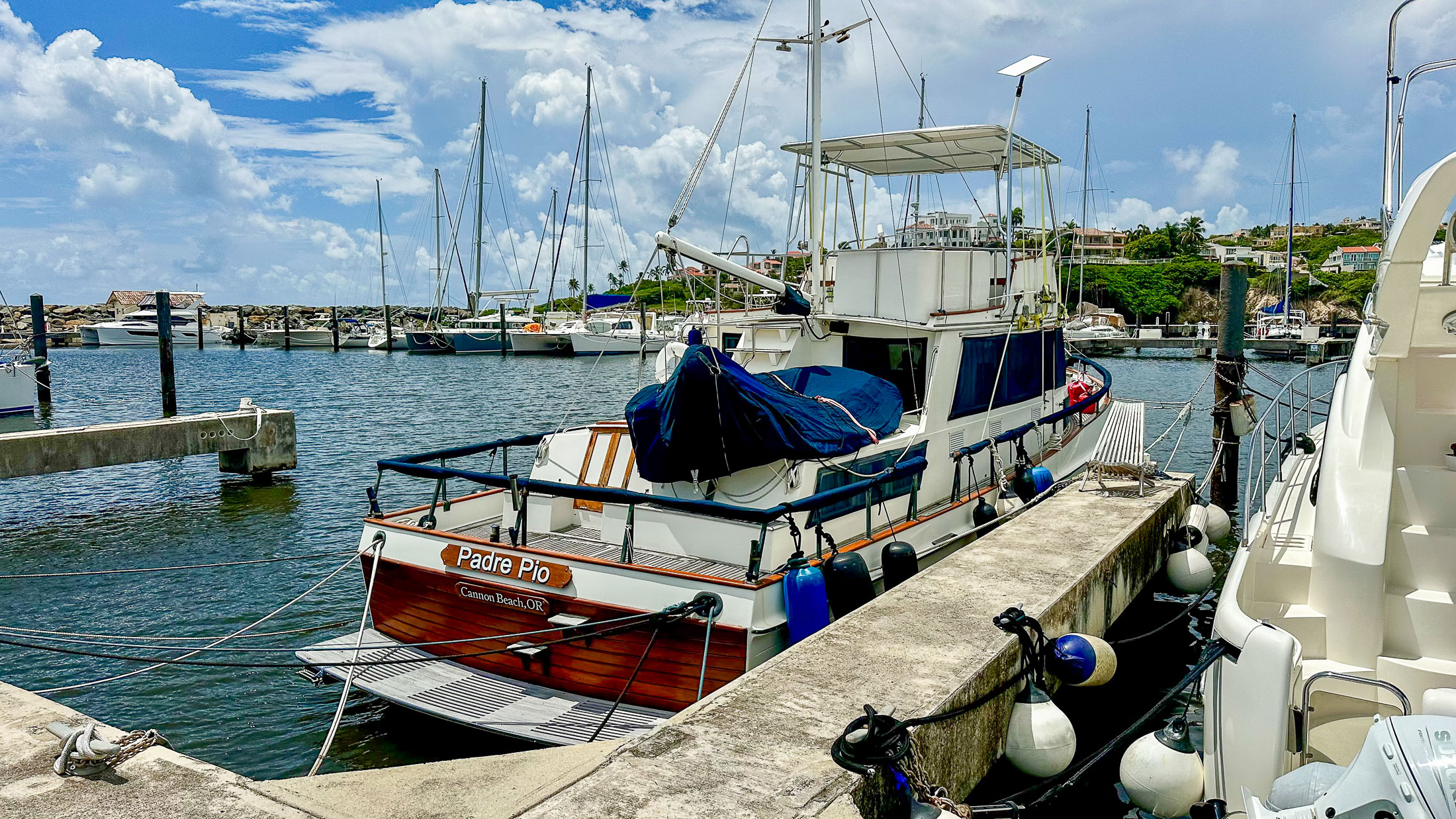
Carlos explained the boat had been in “storage mode” since the owners left for Ireland in May, secured with extra lines in case of hurricanes. It had been their full-time liveaboard for three years, and stepping aboard, I could immediately see why. The interior was warm and inviting, with beautiful teak woodwork throughout, an airy salon and galley, an aft suite with two beds and its own bathroom, plus a forward V-berth with another. For a 42' 7" vessel, it felt surprisingly spacious, with storage tucked into every corner.
Down in the engine room, everything was tidy and well-labeled. The new 10KW generator had barely 120 hours on it, while the twin Ford Lehman diesels showed around 6,500 hours each, supported by a 600 gallons of diesel split between two tanks that were recently refurbished. The boat also carried a Naiad stabilizer system—an expensive upgrade that makes it ride almost like a catamaran even in heavy seas—along with an AC system powerful enough to cool the entire boat. Two large refrigerator/freezers, a watermaker capable of producing 40 gallons of fresh water per hour into the 260-gallon tank, three massive batteries, and 800 watts of solar mounted above the upper deck rounded out the impressive specs. There’s also a RIB dinghy with a 15hp Yamaha 2-stroke, mounted neatly on the stern. Thanks to the powered lift system, getting it in and out of the water is effortless—just a push of a button.
For a 1986 boat, it had clearly been cared for, though the aging teak decks and a handful of cosmetic projects showed its age. Still, standing on the top deck—with its 360-degree views and the feel of a floating patio—I could easily picture our family of four making it work.
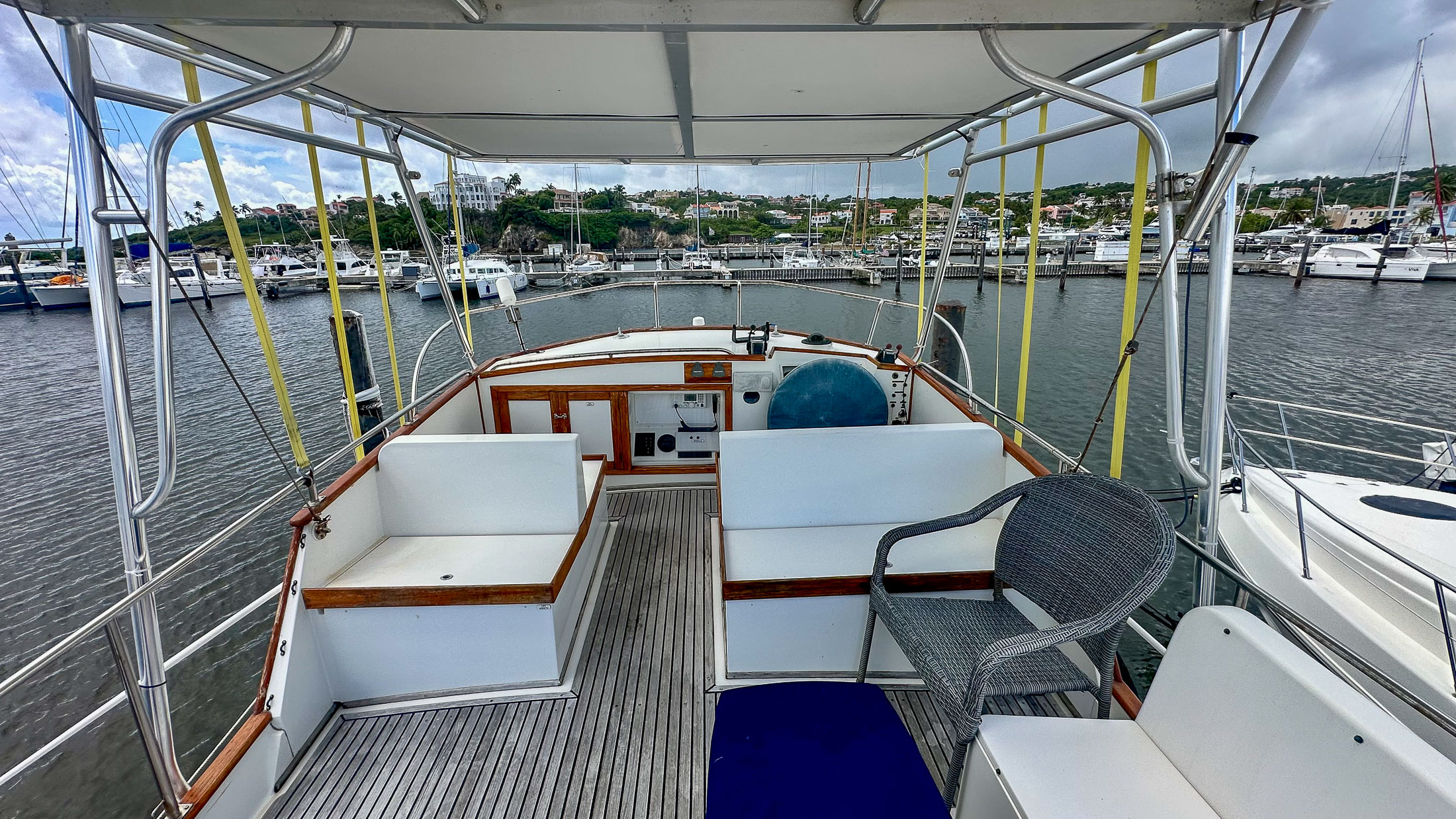

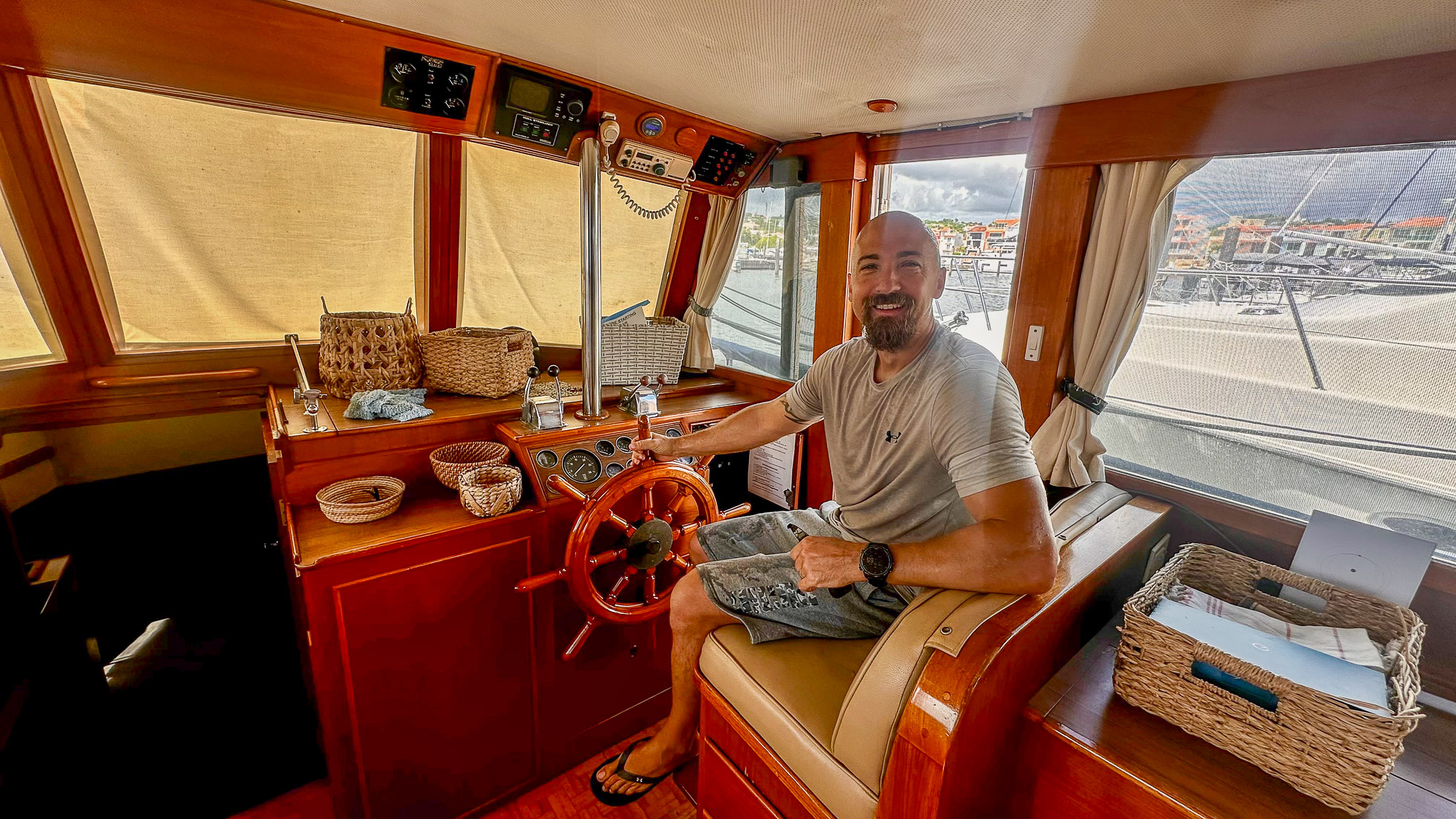
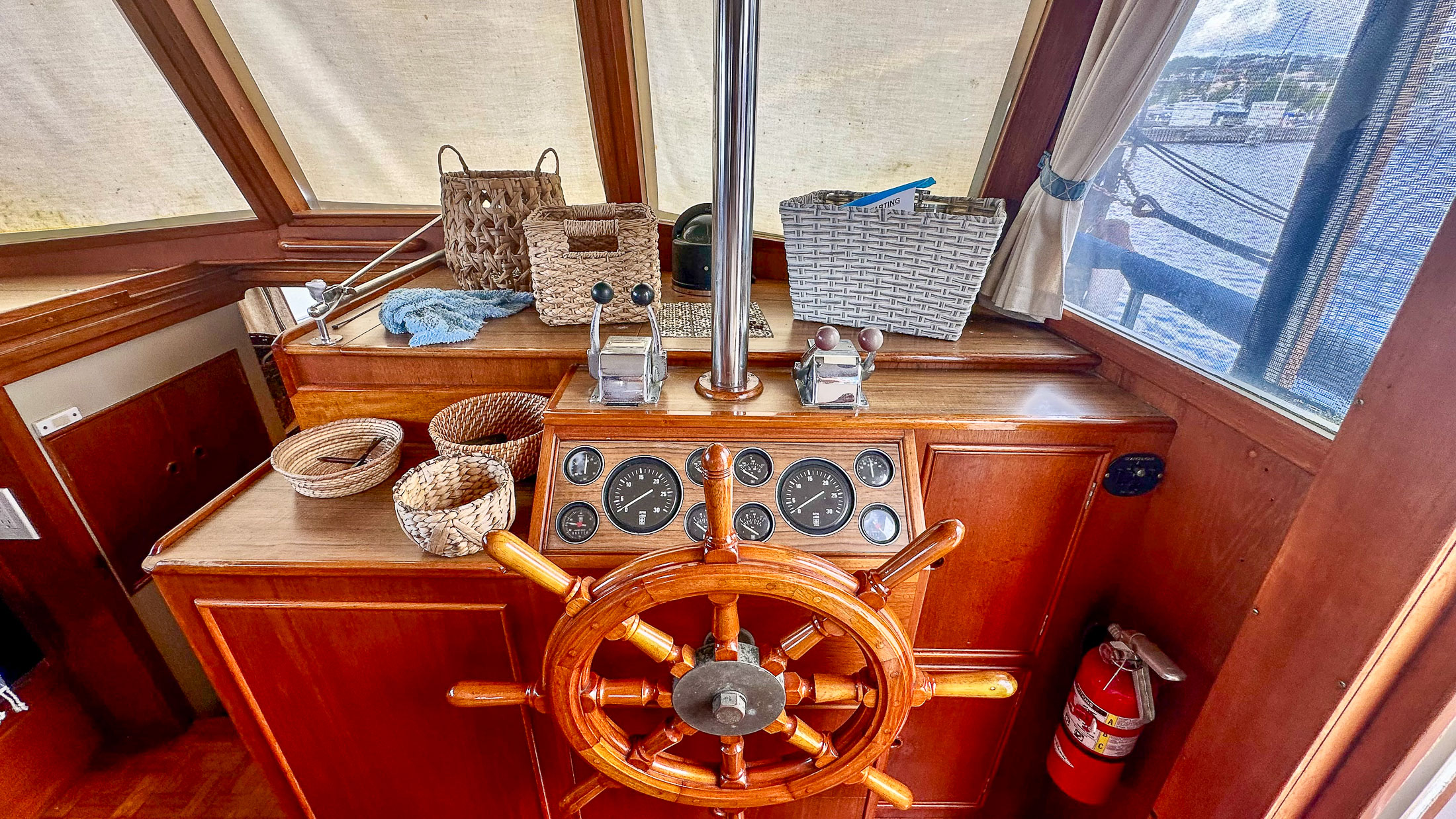
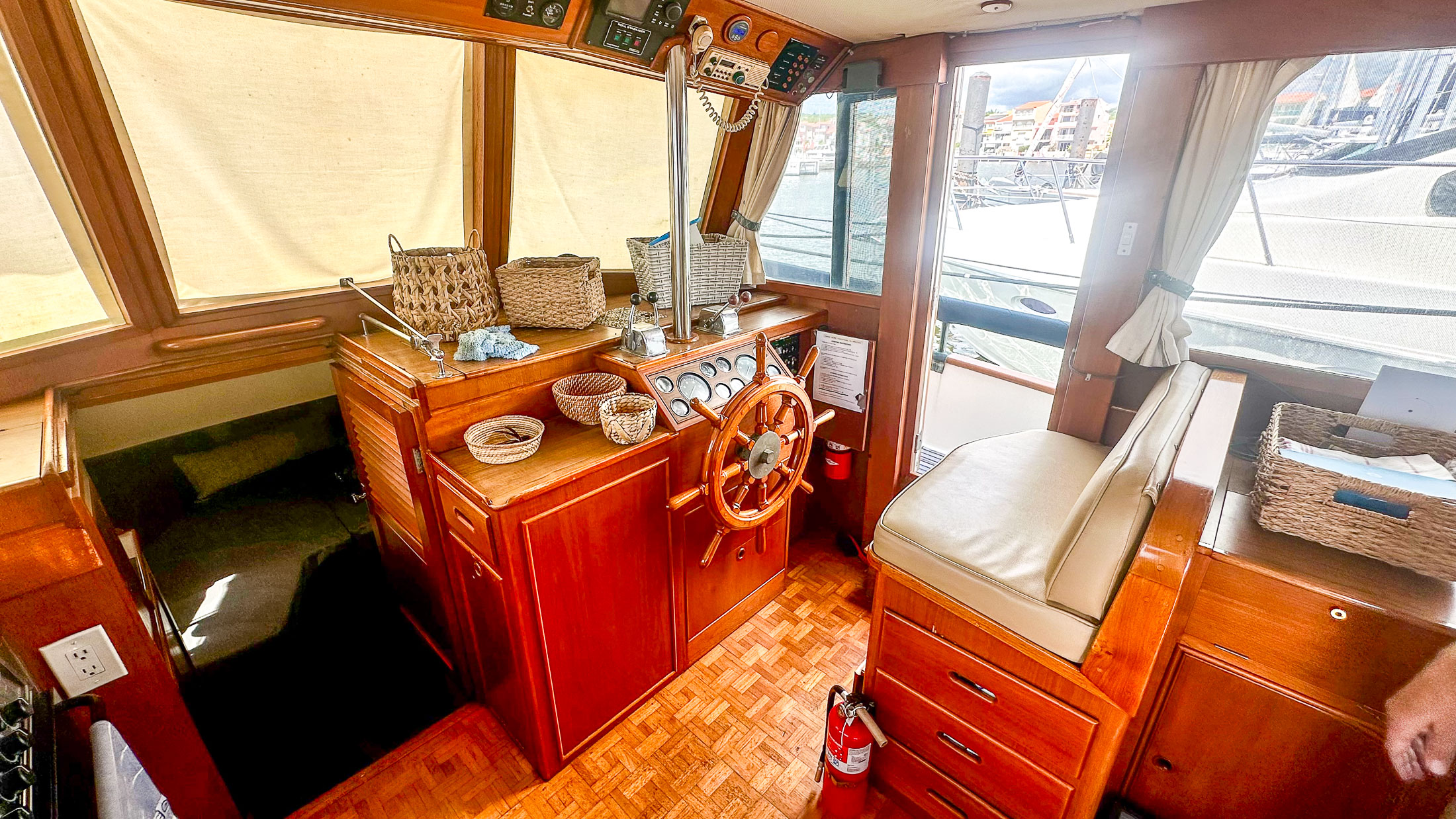
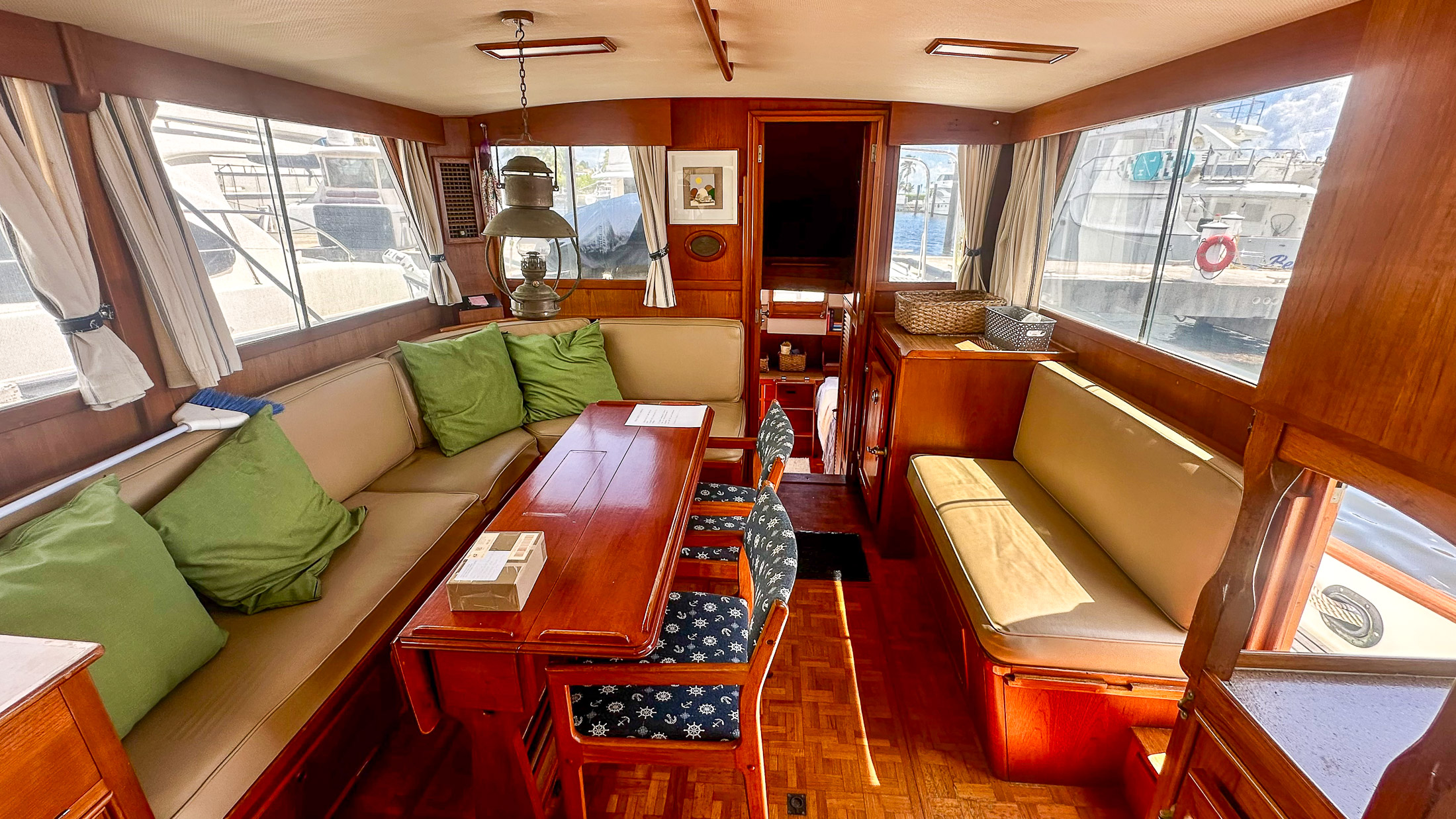
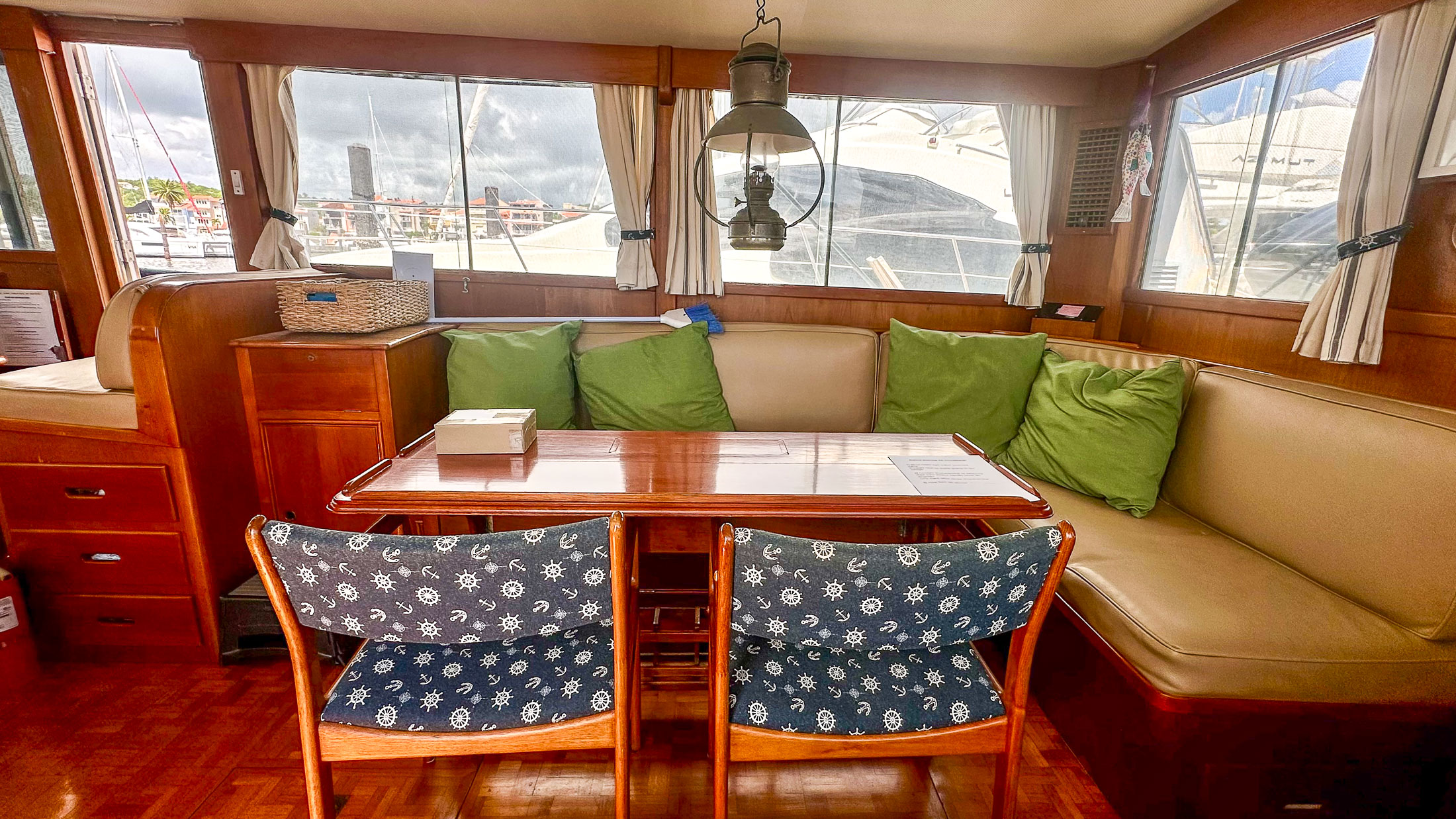
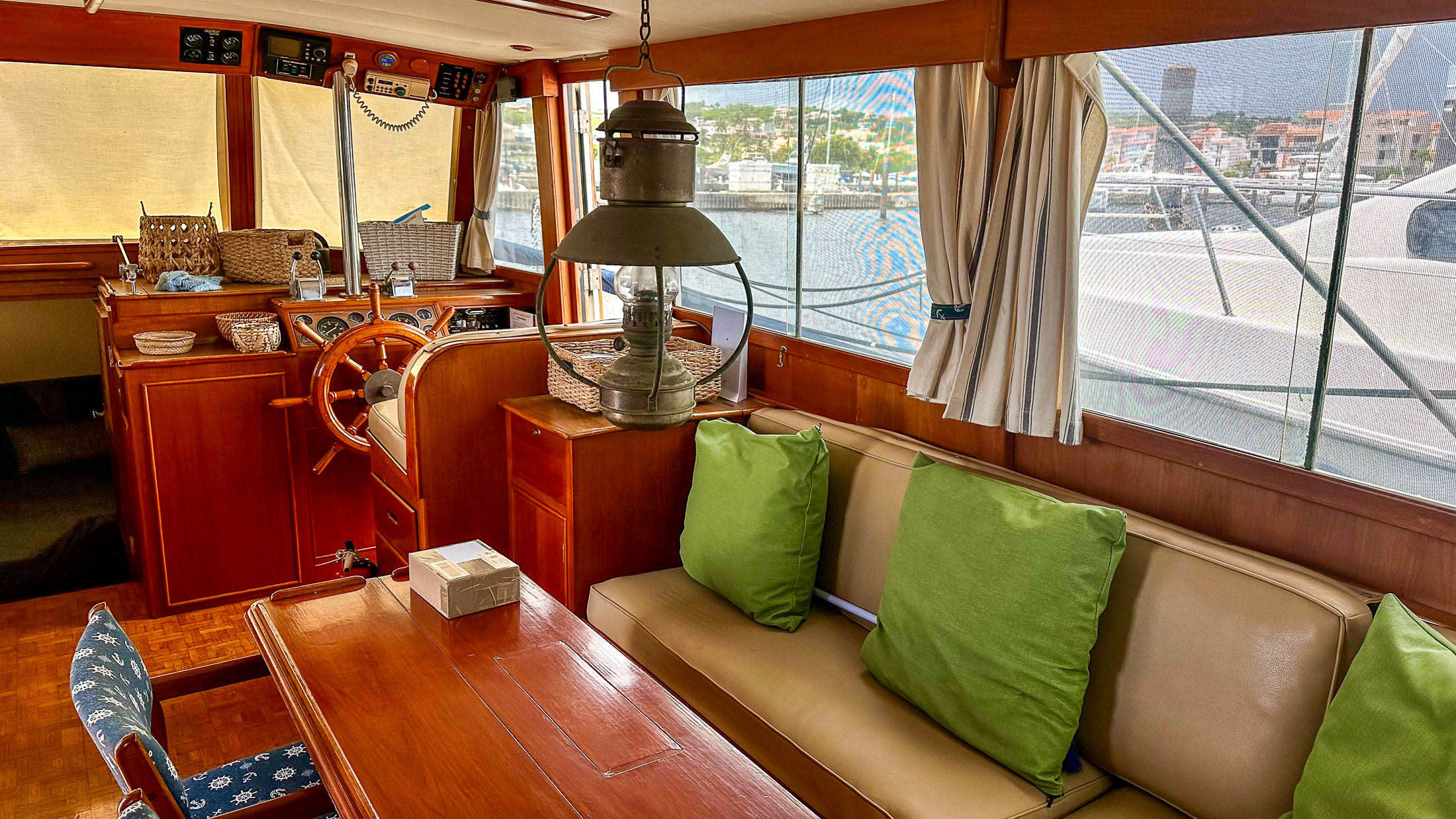
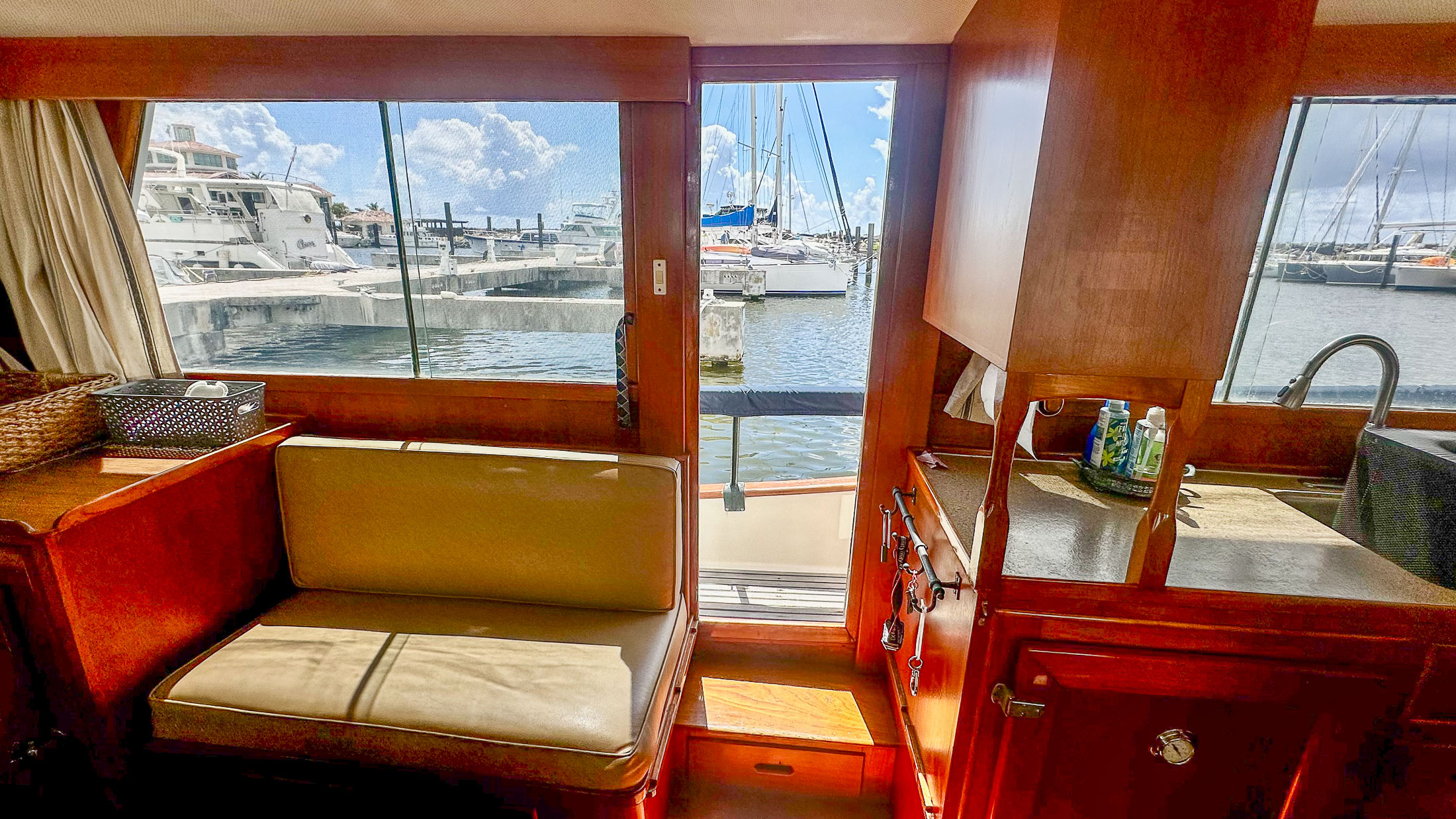
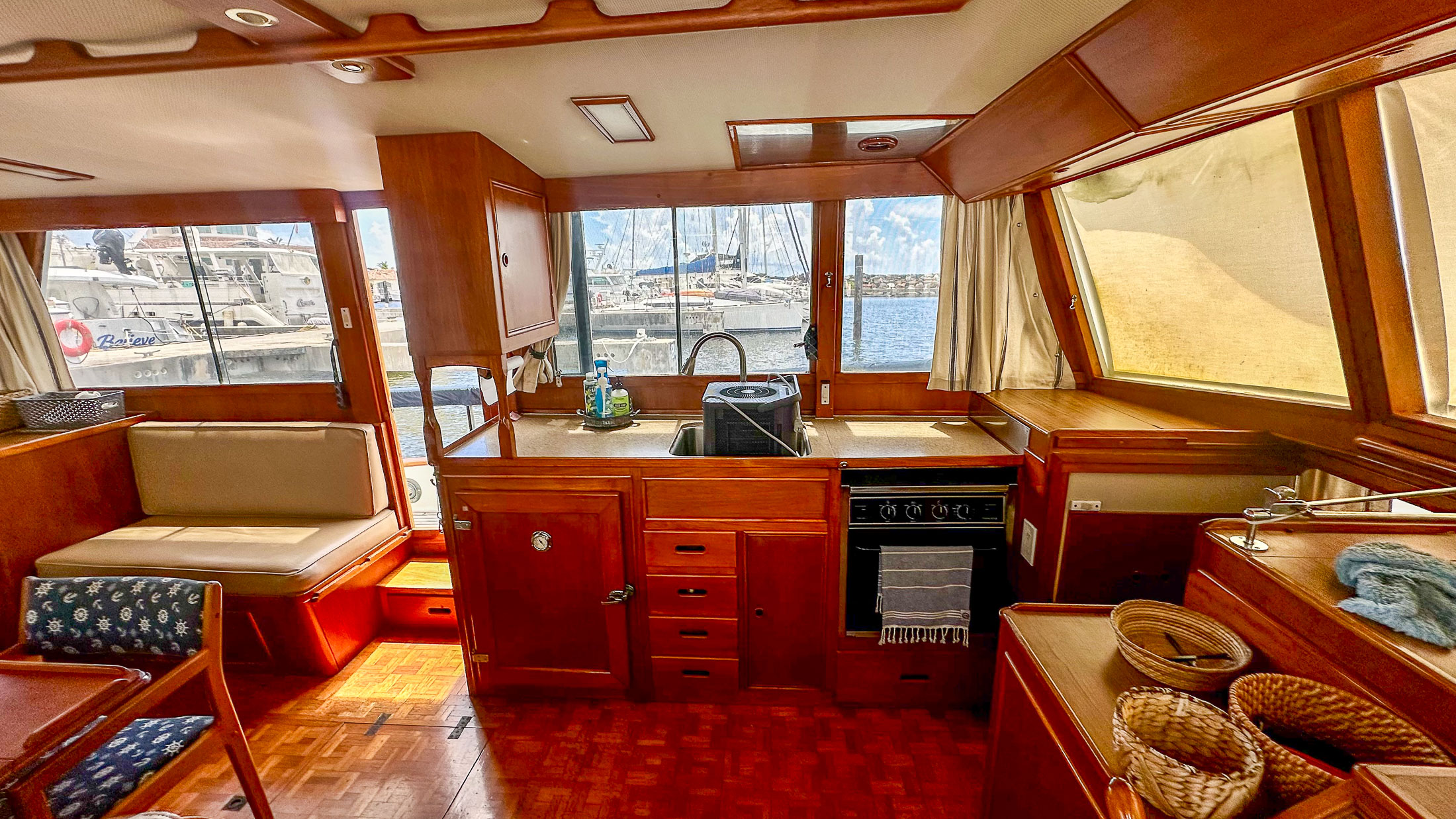
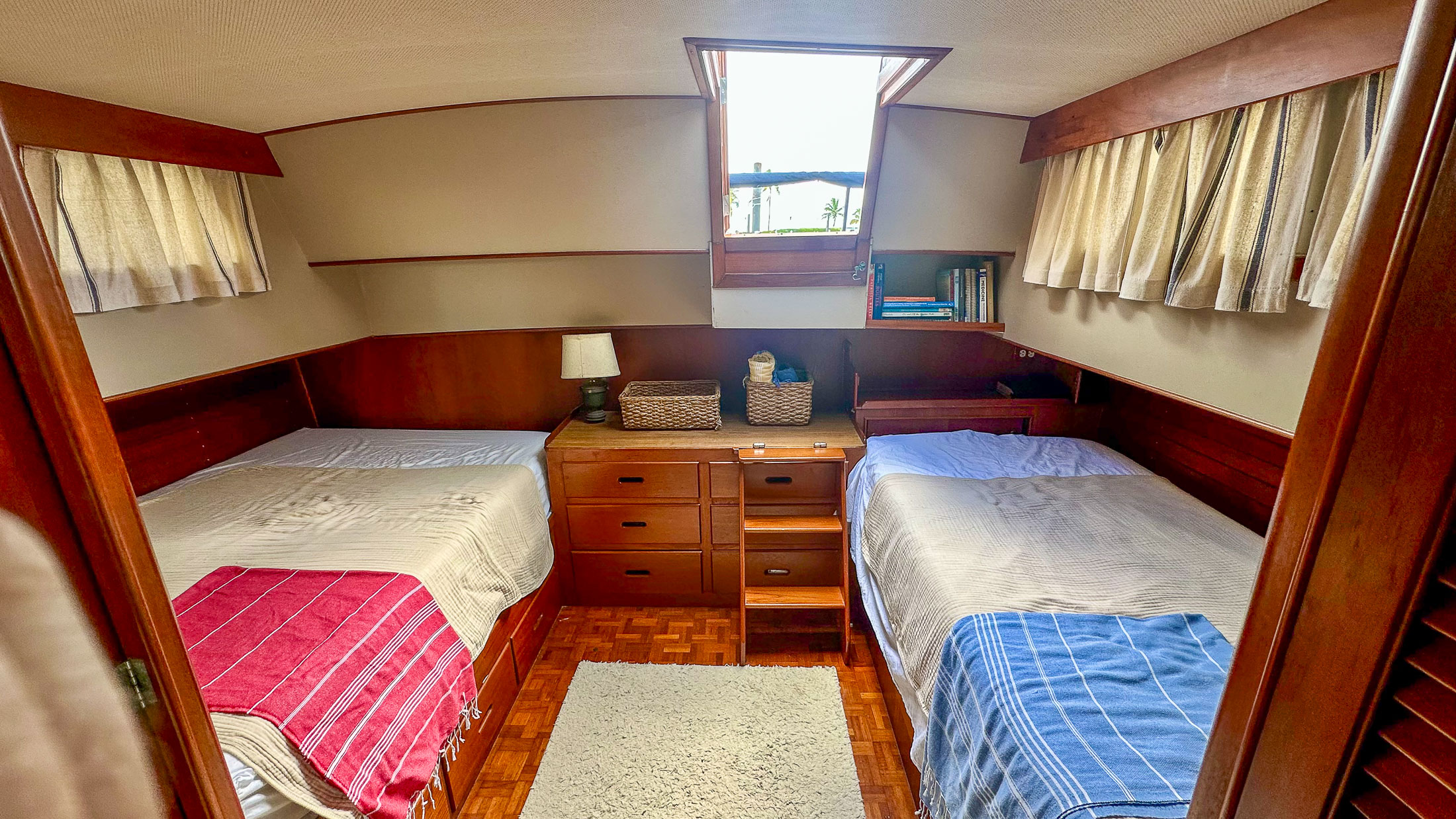
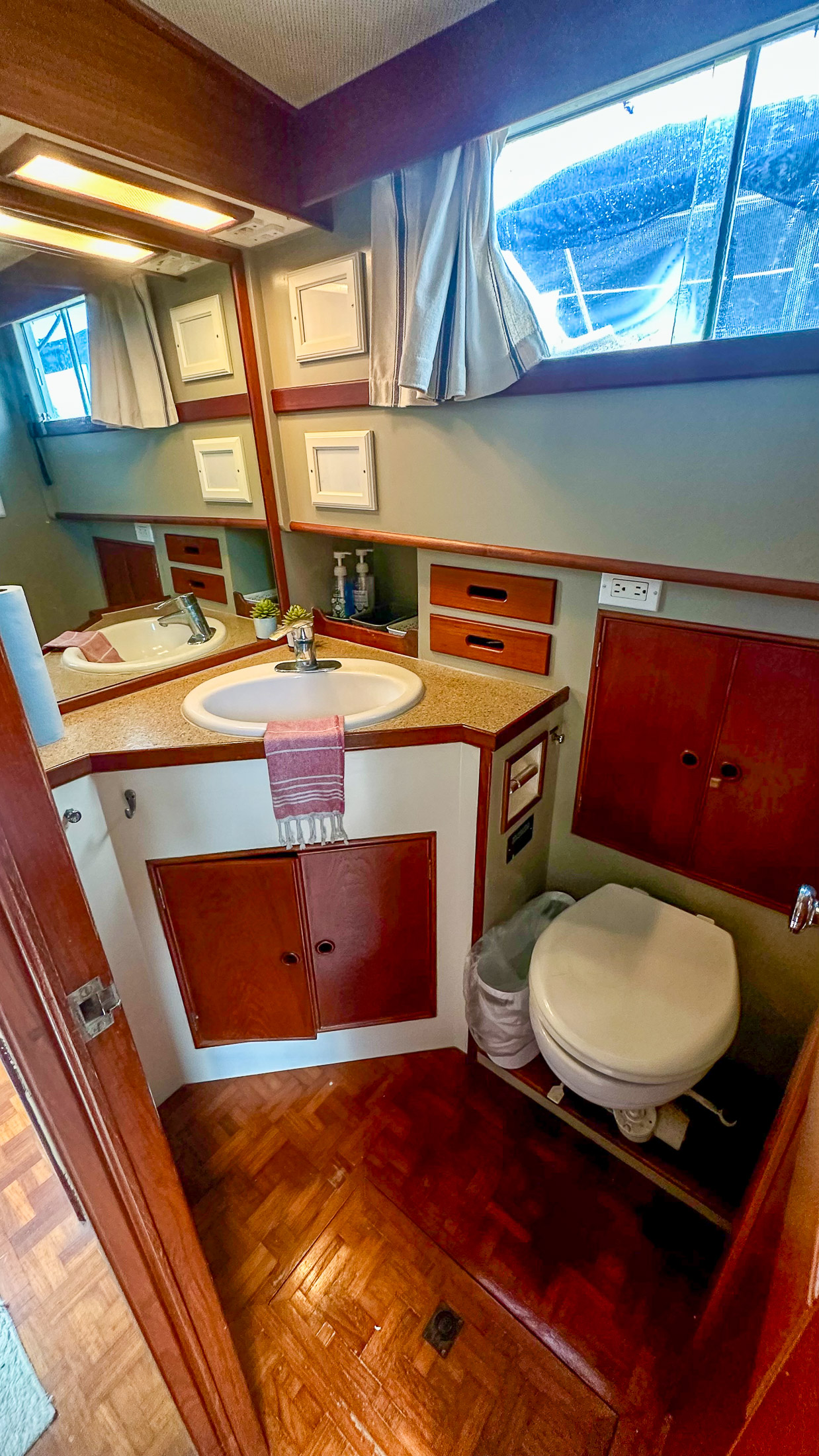
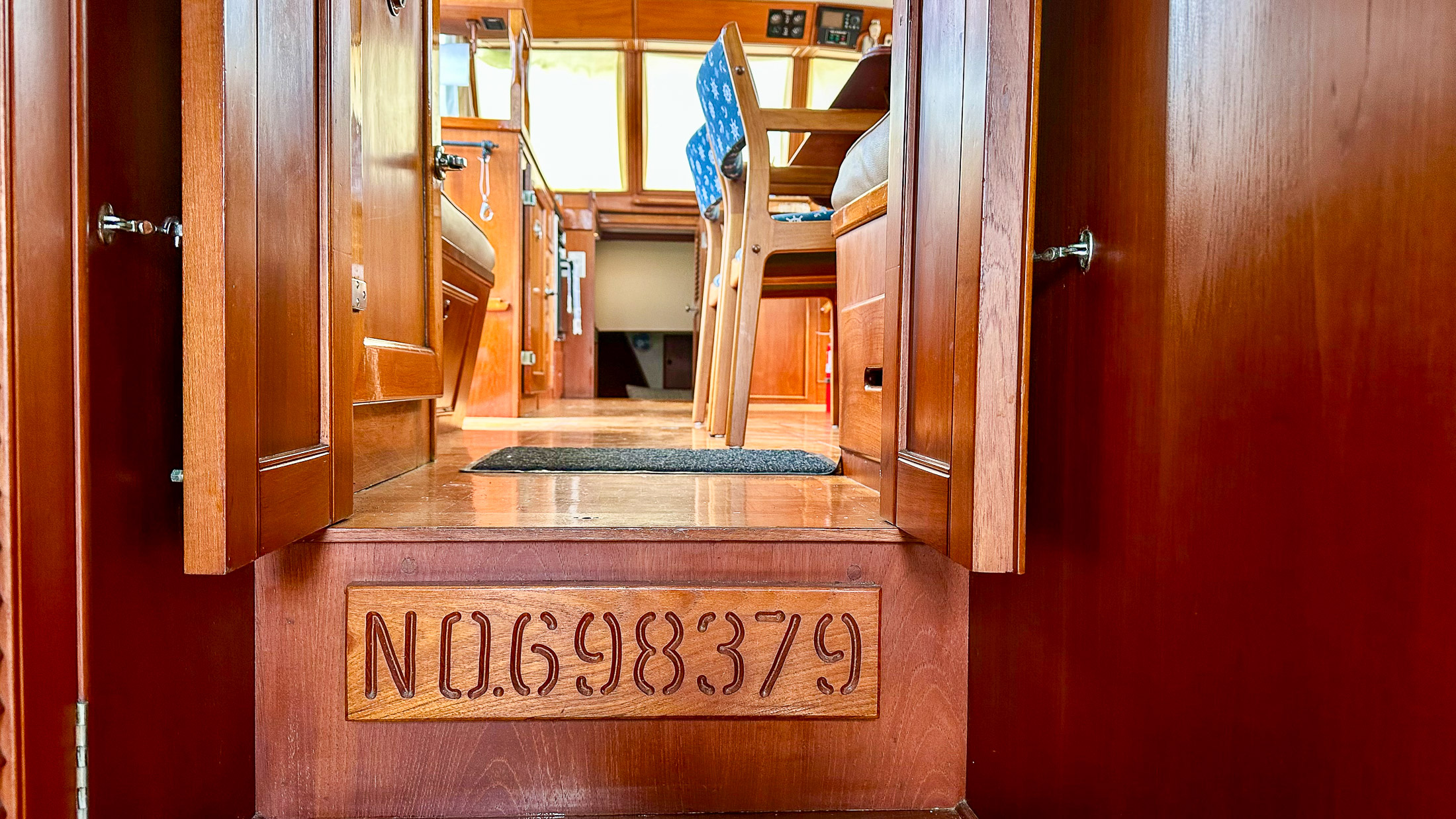
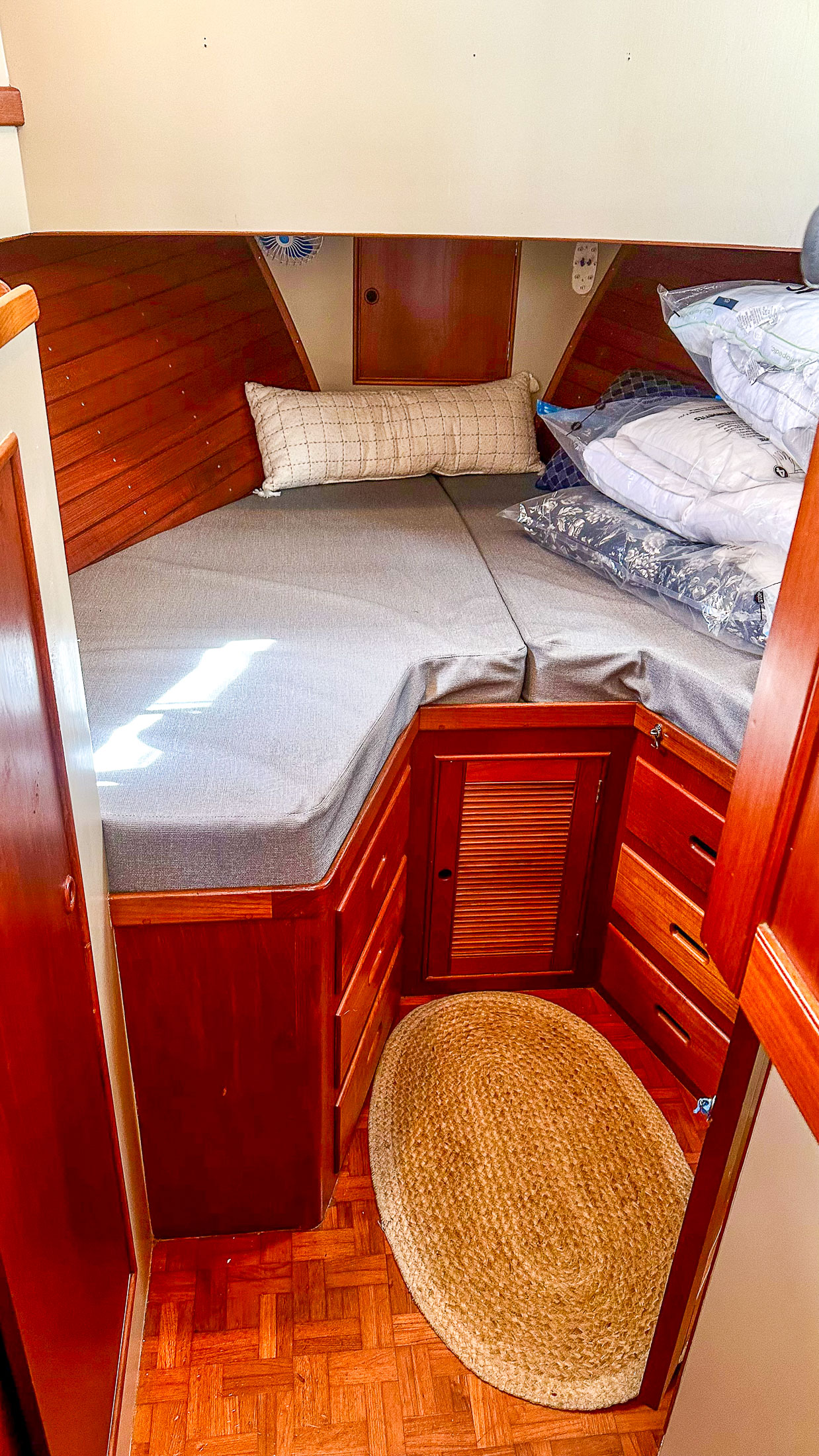
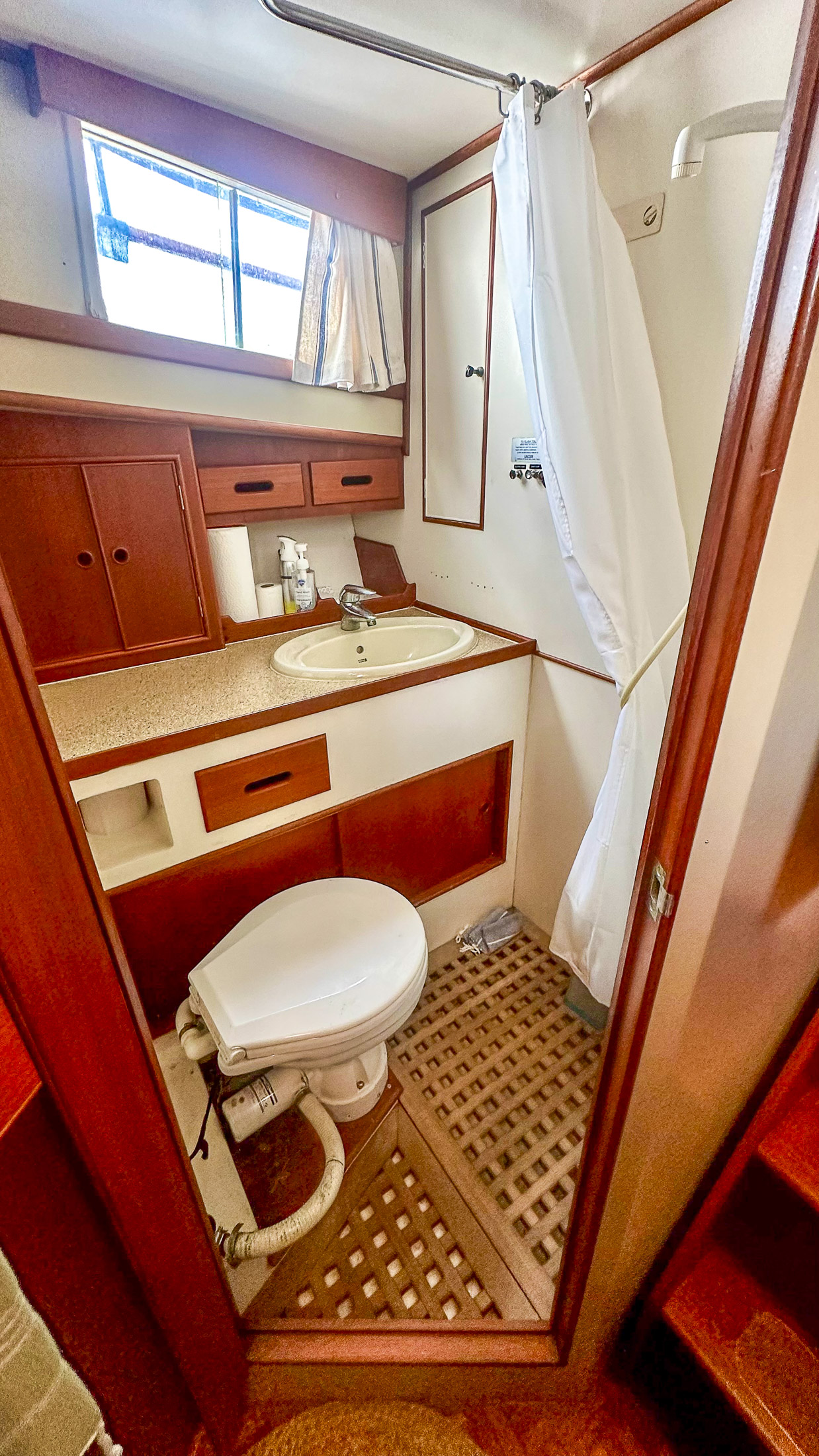
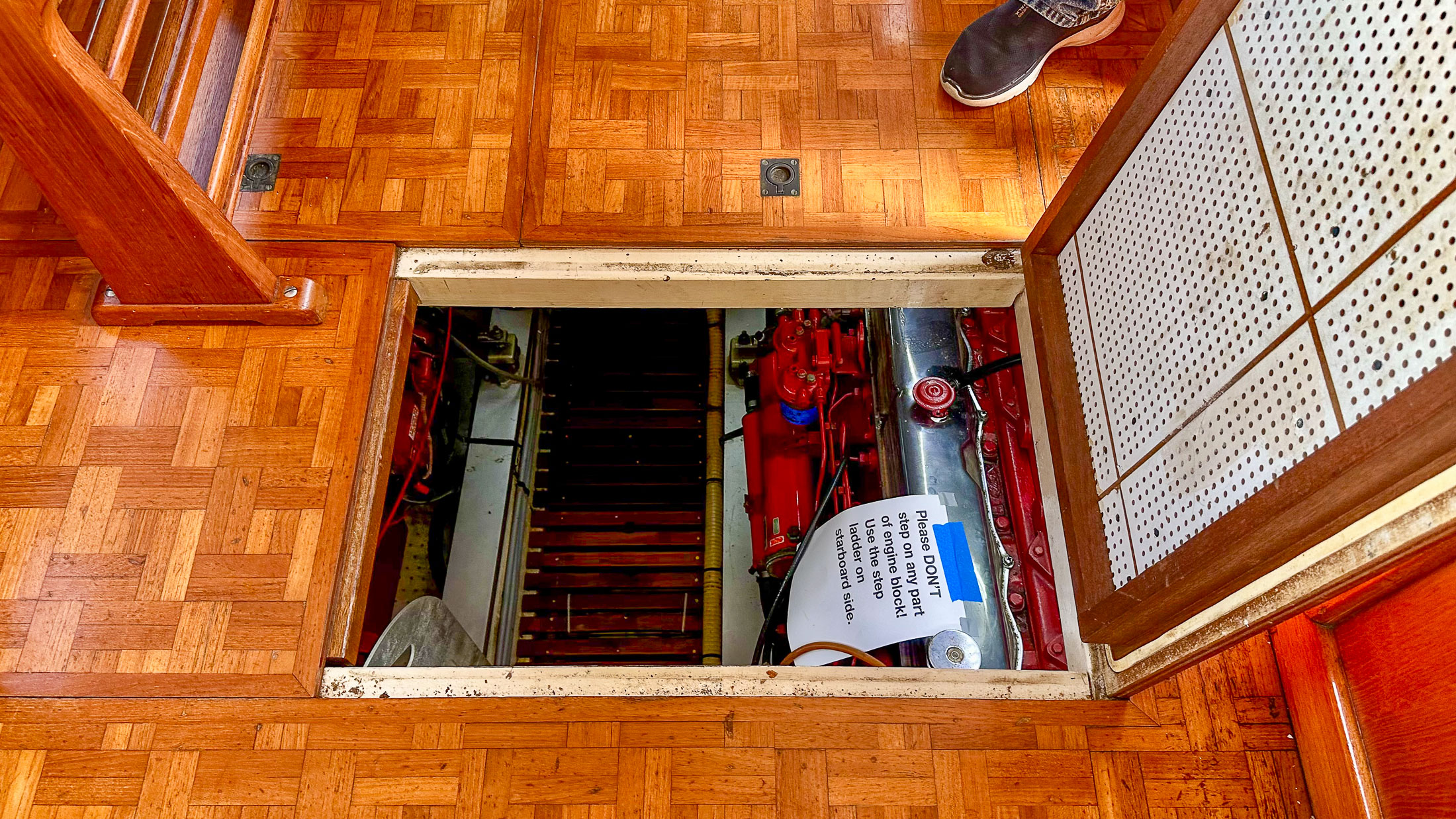
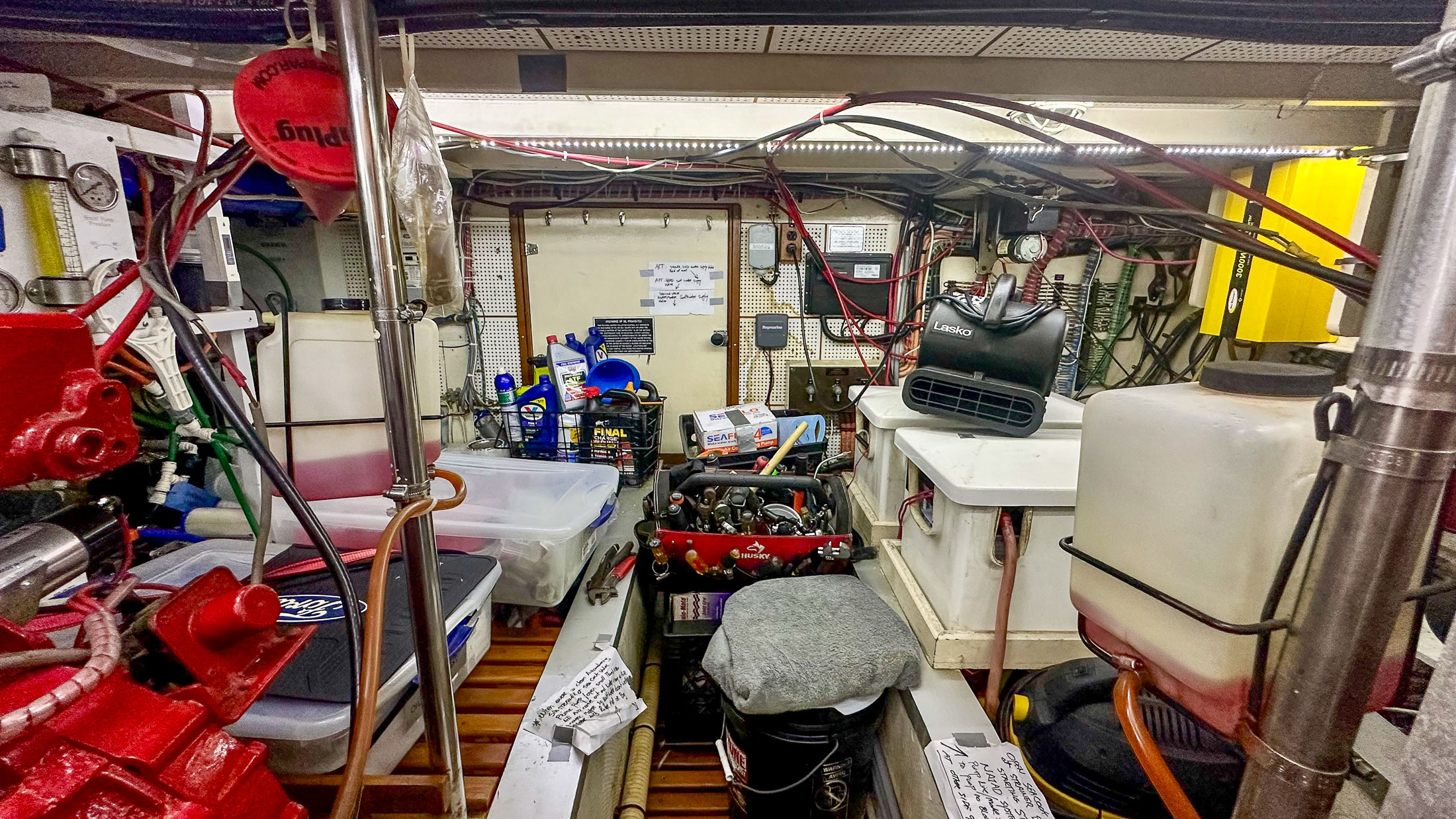
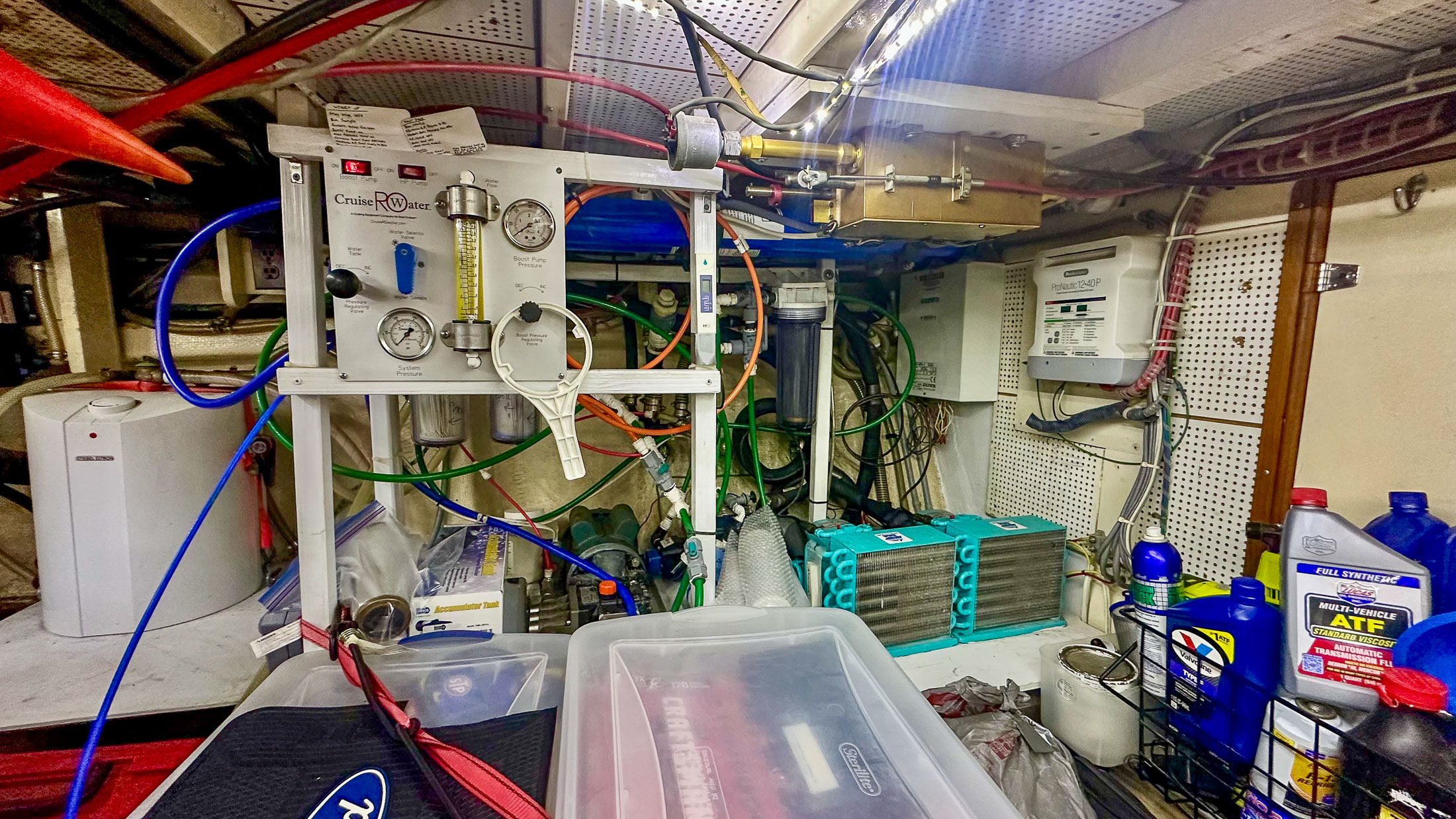
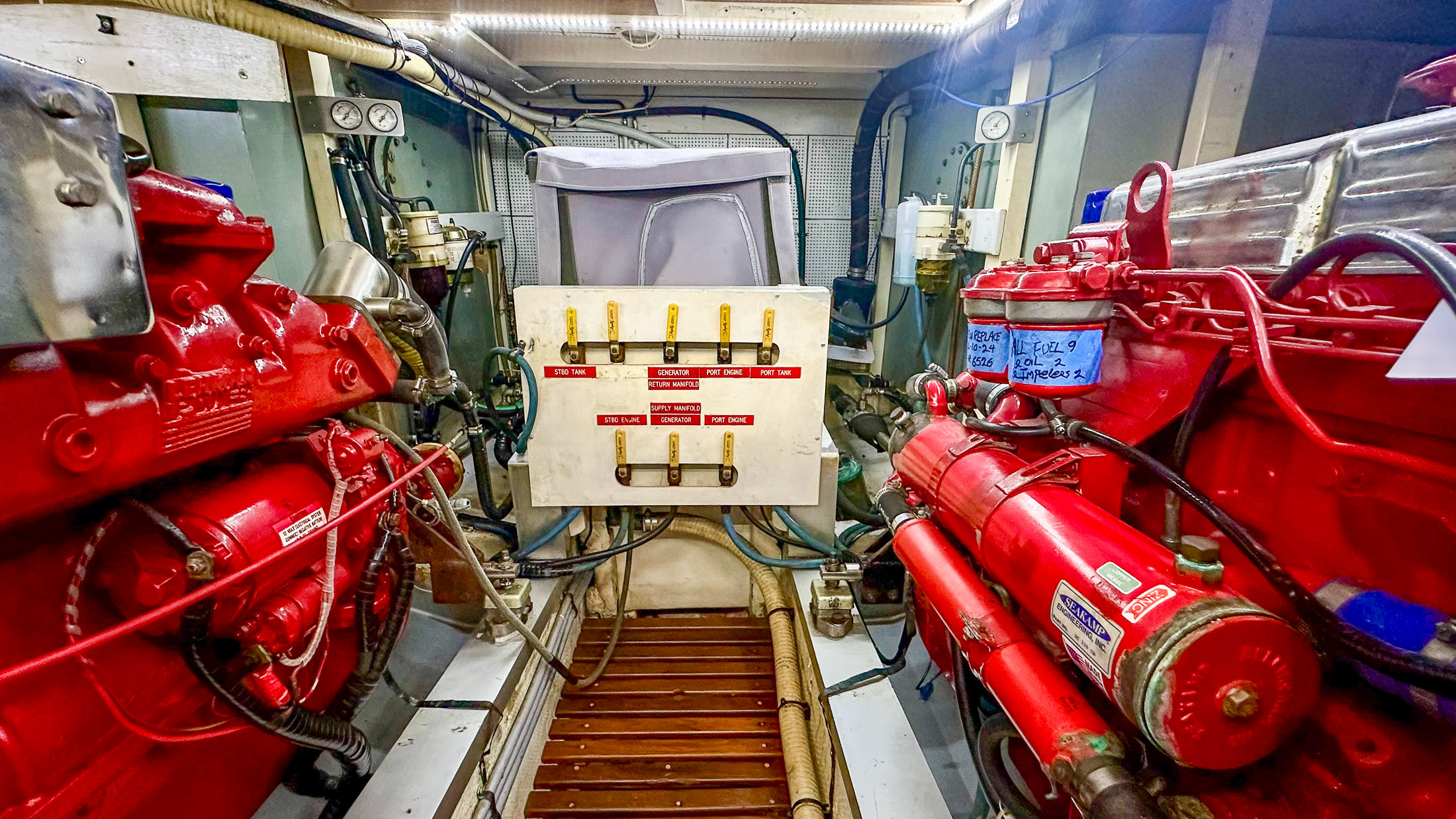
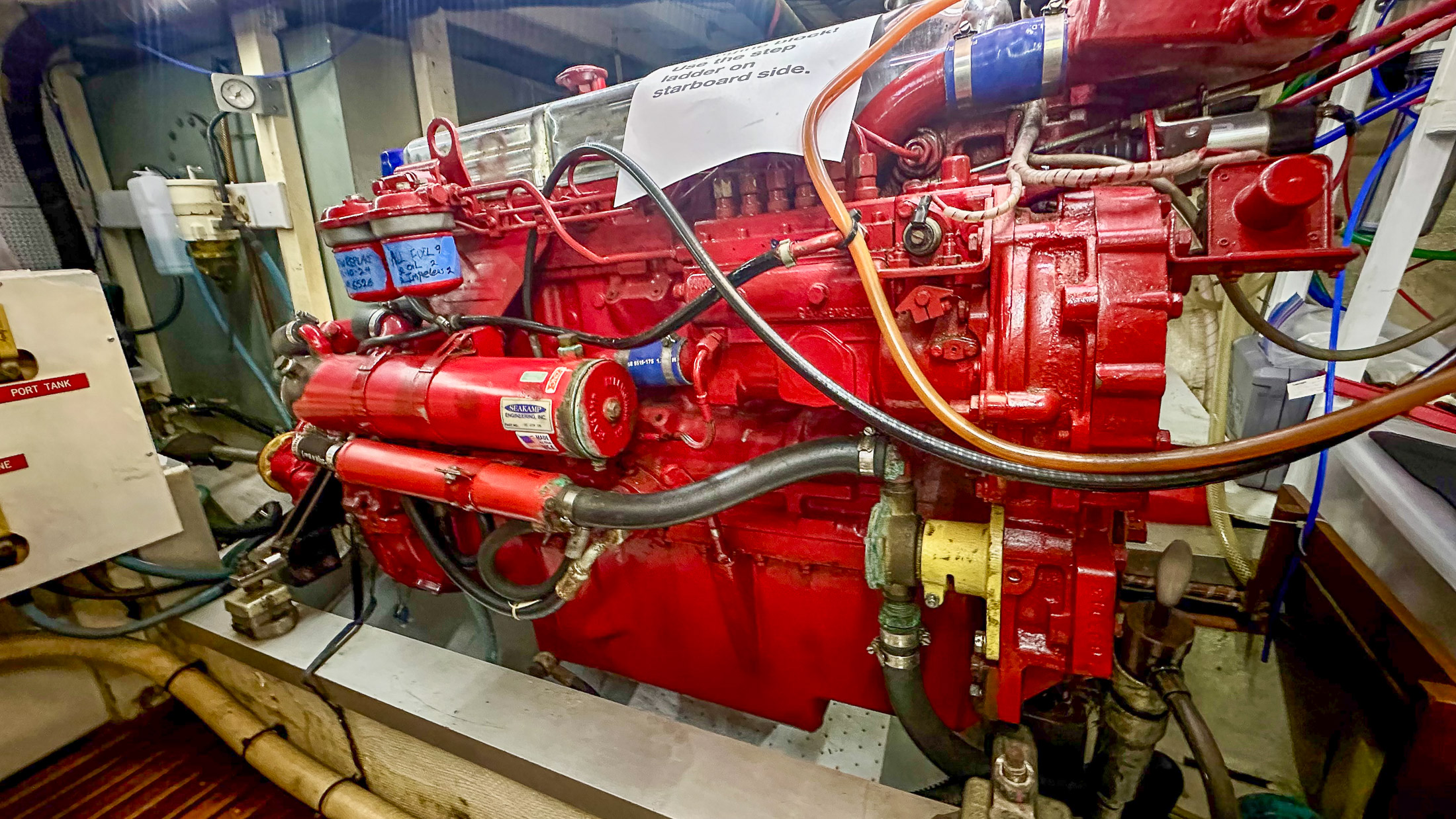
After exploring every corner, I walked away feeling optimistic but cautious. The boat seemed to have solid bones, though only a surveyor could say for sure. The marina itself was also a plus—it offered a swimming pool, laundry, a restaurant, and slips at about $600 a month, with water and electric billed separately as used. It would be a comfortable spot to settle in and get our bearings with the boat. Still, this is all new to us, and the learning curve would be steep. With our trip to Poland just around the corner, the timing didn’t feel right to commit. And with hurricane season lasting through November in the Caribbean, I doubt there’s much competition for this boat at the moment, which could actually work in our favor as a negotiating angle. If the timing lines up and the boat is still available, we’ll revisit the idea—but it is definitely tempting.
